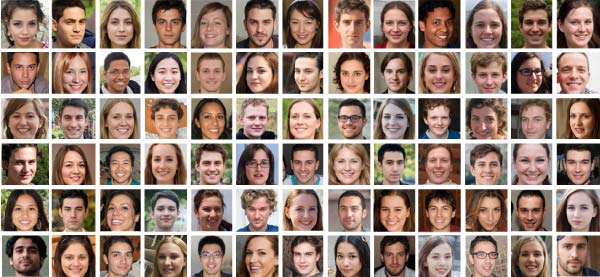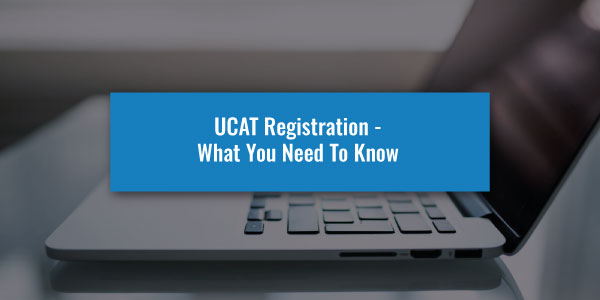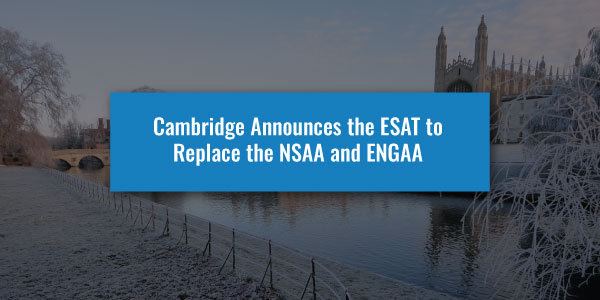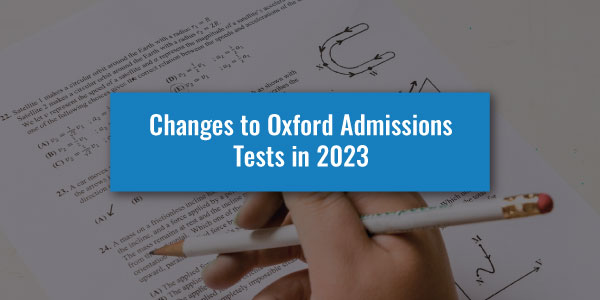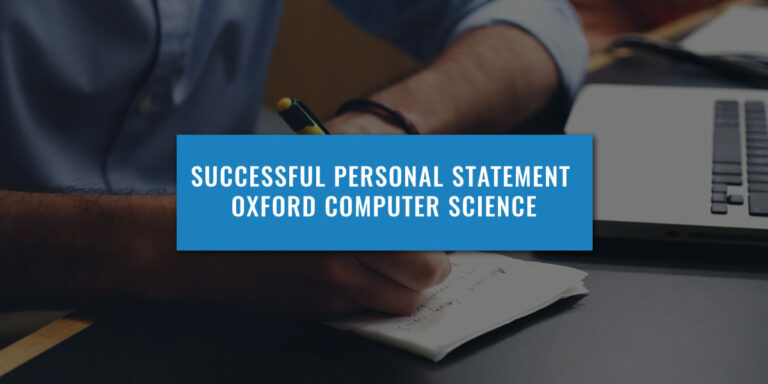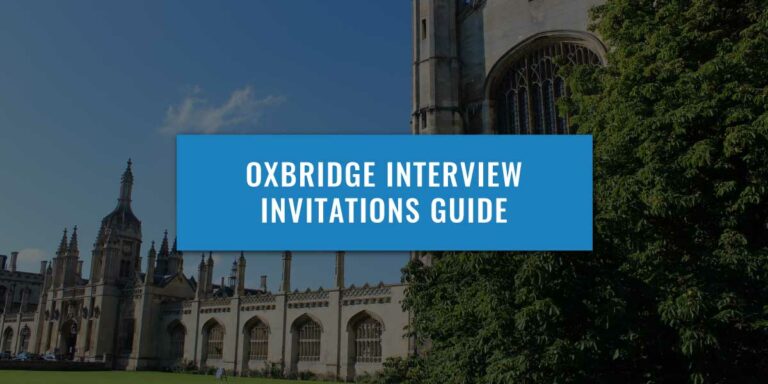The ENGAA is an important component of the Cambridge Engineering admissions process, so understanding it is essential.
Assessing the skills required to be a Cambridge engineer, it challenges your suitability for the demanding course.
In this guide, we go over everything you need to know for Section 1B of the ENGAA. If you haven’t already, be sure to read through our ENGAA Section 1A and ENGAA Basics Guides first, as these will help you understand the earlier parts of the exam more. If you are ready, however, let’s begin.
What Is Section 1B Of The ENGAA?
Section 1 of the ENGAA is a 60-minute assessment testing your Mathematics and Physics aptitude.
The section is split into two parts, with Section 1B drawing your knowledge of Advanced Mathematics and Advanced Physics.
You are advised to spend no more than 30 minutes on Part A giving you the same amount of time to answer the 20 multiple-choice questions that form Part B. This works out to be around 90 seconds per question.
The questions in Section 1 are numbered from 1-40 meaning there is no split in numbering between Part A and Part B. Therefore, the way of telling which part you are on is checking the question number – question 21 or above is Part B.
As well as additional advanced knowledge, Section 1B will also assume knowledge of all the content in Section 1A.
Early preparation is the key to a successful Cambridge Engineering application.
Writing the perfect Personal Statement, scoring highly on the ENGAA and interviewing like a pro is how you get your dream Cambridge Engineering offer.
Discover our Engineering Programme for comprehensive admissions support by clicking the button below to enrol and triple your chances of success.
Assumed Advanced Maths Knowledge for Section 1B
Maths aptitude is crucial for being able to score highly on the ENGAA; many students find that improving their numerical and algebraic skills usually results in notable improvements in their scores.
The knowledge you are required to demonstrate in Part B is advanced for a reason so understanding the specification will go a long way in helping you prepare for the Admission Test.
These topics are:
Algebra and Functions
Algebra is used in all sorts of mathematics, so this is one that really need to know. Some of the areas you will be expected to know are:
- The laws of indices for all rational exponents.
- Using and manipulating surds, including the simplification of expressions containing surds.
- Quadratic functions, including their graphs.
- The algebraic manipulation of polynomials.
- Solving linear and quadratic inequalities.
- The properties of common functions such as “f(x) = |x|” and “fx = √x”.
Sequence and Series
Sequence and series are all about recognising, identifying and progressing numerical patterns – so make sure you can recognise them in the ENGAA.
The areas covered in Part B included:
- Arithmetic series.
- Finite geometric series and convergent geometric series.
- Binomial expansion of (1+x).
- The notions of n! and (nr).
Two-dimensional Coordinate Geometry
Geometry is all about the mathematics of shapes, so for this topic you will need to perfect your skills on graphs, angles and converting equations.
Make sure you have brushed up on the following knowledge:
- Straight line equations, including “y – y1= m(x – x1)” and “ax + by + c = 0.
- The coordinate geometry of a circle with the equations “(x – a)2+ (y – b)2 = r2” and x2 + y2 cx + dy + e = 0″.
- The use of various circle properties (e.g. angles in the same segment are equal and the angle of a semicircle.
Trigonometry
All about triangles, which has many rules to remember so ensure you are aware of:
- Sine, cosine, and tangent values, functions and rules.
- The area of a triangle in the form of “1/2absinC”.
- Radian measure.
- Solving simple trigonometric equations.
Exponentials and Logarithms
Exponents and their inverse, logarithms will be covered in the ENGAA so you will want to revise the following:
- y=ax and its graph.
- the laws of logarithms, including “ab= c <=> b = loga c” and “log a x + logay = loga (xy).
- Solving equations in the form of “ax= b”.
Differentiation
You will be required to find derivatives and answer questions based on them.
To be able to do this you will need to know:
- The derivative of f(x).
- Differentiation of xn for the rational of n.
- Second-order derivatives.
- The application of differentiation relating to gradients, tangents, normal, stationary points and increasing/decreasing functions.
Integration
Exponents and their inverse, logarithms will be covered in the ENGAA so you will want to revise the following:
- y=ax and its graph.
- the laws of logarithms, including “ab= c <=> b = loga c” and “log a x + logay = loga (xy).
- Solving equations in the form of “ax= b”.
Graphs of Function
Graphic interpretations of functions are extremely handy in Mathematics, but learning to use and create them is pretty difficult.
The knowledge to know is as follows:
- Recognising and sketching graphs of common functions.
- The effects of simple transformations on graphs of “y=f(x).
- Altering values of m and c.
- Altering values of a, b and c in “y=(x+b)2+c.
- Using differentiation to determine graph shapes of a given function.
- Solving equations using geometric interpretation.
As you can see there is a lot to be aware of, on top of the knowledge from Part A.
Example ENGAA Section 1B Advanced Maths Questions
Question 1
A hemispherical speedometer has a maximum speed of 200 mph. What is the angle travelled by the needle at a speed of 70 mph?
- 28°
- 49°
- 63°
- 88°
- 92°
C
Question 2
What is the perpendicular distance between point p with position vector 4𝐢+5𝐣 and the line L given by vector equation 𝐫=−3𝐢+𝐣+λ(𝐢+2𝐣).
- 2√7
- 5√2
- 2√5
- 7√2
E
Question 3
What is the coefficient of the x2 term in the binomial expansion of (2−x)5?
- -80
- -48
- 40
- 48
- 80
E
Aiming for a career in Engineering after you graduate? We’ll help you secure your dream Engineering offer first.
Writing the perfect Personal Statement, scoring highly on the ENGAA and interviewing like a pro is how you get your dream Cambridge Engineering offer.
Discover our Engineering Programme for comprehensive admissions support by clicking the button below to enrol and triple your chances of success.
Assumed Advanced Physics Knowledge for Section 1B
Of course, the Advanced Maths is only half of the knowledge you are required to know for the ENGAA.
The rest of Section 1B is all about Advanced Physics, and as you would expect there is a lot of knowledge to go over.
Forces and Equilibrium
These are the basis of all Physics, so it is essential you revise everything there is to know. The topics to look at include:
- The nature of scalars.
- The nature, components, and resultants of vectors, including coplanar vectors.
- Moments, including those defined as force x perpendicular distance from the point to the line of action of the force.
- Normal and frictional components of contact forces.
- The terms “smooth” and “rough” in the context of Physics.
- The concept of “centre of gravity”.
- Solving problems that involve the equilibrium of rigid bodies under coplanar forces.
Kinematics
This branch of mechanics involved the calculation of possible motion without regard to related forces. It goes hand-in-hand with Mathematics, so there are a lot of techniques and equations you will need to remember including:
- The equation “power = force x velocity”.
- The equations of motion “v = u + at”, “s = ut + (1/2)at2”, “s = (u + v)t/2” and “v2 = u2 + 2as”.
- The use of graphical methods involving acceleration, displacement, distance, speed, time and velocity.
- The use of graphical representations of one-dimensional motion.
Newton’s Laws
There are three essential rules that will apply to any kind of mechanical science that you use.
There are:
- An object will not change motion unless a force acts on it.
- The force of an object is equal to its mass multiplied by it acceleration.
- When two objects interact, they apply forced to each other in opposite direction and of equal magnitude.
As to how you are going to need to apply these rules, there is a number of different ways including:
- Application to linear motion of point masses moving under the action of forces.
- Solving problems that involve projectile motion.
- Solving simple problems that involve two bodies connected by a light inextensible string or rod.
- Modelling bodied moving vertically with constant acceleration.
Momentum
Momentum is another major area of physics, and you will want to begin your revision here by understand the equation of p = mv.
As for the ENGAA, you will also need to know:
- Linear momentum.
- The principle of conversation of momentum in the 1st dimension.
- The relation of conservation of momentum to Newton’s Laws of Motion.
- Application of the equation “impulse = FΔt”.
Energy
There is a lot of knowledge to understand here, which topics to cover such as:
- Use of the equations “∆Ep= mg∆h” (gravitational potential energy) and “Ek = 1/2 mv2” (kinetic energy).
- Use of the principle of conservation of energy, including quantitative and qualitative use of energy conservation.
- Application of the equations ‘power = rate of doing work = rate of energy transfer” and “efficiency = (useful energy transfer/total energy input) x 100%”.
Materials
Materials covers literally all physical matter – you do not need to know everything though.
However, what you do need to know is the following:
- Application of the equations “density = mass/volume”, “young modulus = stress/strain” and “pressure = normal force/area”.
- The concepts of tensile and compressive deformation in elastic and plastic.
- Application of Hooke’s Law including the equation spring constant = force per unit extension.
- The behaviour of springs including load, extension, and elastic limit.
- The concept of strain energy.
- Definitions of the terms “stress”, “strain” and “ultimate tensile strength”.
Waves
Waves in physics are defined as a disturbance that travels through space-time alongside a transfer of energy.
What you should be revising for this topic is”
- Describing wave motion when illustrated by strong, ropes and ripple tanks.
- Use of equations “frequency =1/period”, “speed = frequency x wavelength” and n=1/sinC.
- Identification of nodes and antinodes.
- The principle of superposition.
- The comparison of transverse and longitudinal waves.
- The concepts of reflection/refraction of waves, total internal reflections, and critical angle (C).
- Definitions of the terms “amplitude”, “displacement”, “frequency”, “path difference”, “phase difference”, “period”, “speed” and “wavelength”.
Electricity
You will no doubt cover this in Part A but Advanced Physics will take this knowledge to the next level.
These are the topics you should be familiarising yourself with:
- Use of the following equations; “charge = current x time”, “potential difference = work done/change”, “V = IR”, “P = VI”, “P = I2R”, “P = V2/R” and “resistivity = resistance x (cross-sectional area/length)”.
- Application of Ohm’s Law and Kirchhoff’s Laws.
- Recognition and use of standard circuit symbols and diagrams.
- Electromotive force.
Do not be overwhelmed by the amount of information there is to learn, there will be nothing new to just take your time and cover each topic thoroughly.
Example ENGAA Section 1B Advanced Physics Questions
Question 1
A ball is thrown into the air at a velocity 5ms-1 directly upwards and is caught on its descent. Assuming g = 10m/s2 and negligible air resistance, what is the displacement of the ball and the distance travelled by the ball after being caught?
- 0 m, 2.5 m
- 5 m, 0 m
- 5 m, 5 m
- 2.5 m, 0 m
- 0 m, 2.5 m
- 0 m, 10 m
E
Question 2
The amplitude of a wave is damped from an initial amplitude of 200 to 25 over 12 seconds. How many seconds did it take to reach half its original amplitude? Assume that the wave undergoes exponential decay.
- 1
- 2
- 3
- 4
- 6
D
Question 3
A pool cue gives a ball of mass 100g an impulse of 0.27 Ns. What is the velocity of the ball after the impact?
- 27 m/s
- 0.027 ms
- 0.27 m/s
- 2.7 m/s
- 3.6 m/s
D
Conclusion
Hopefully, now you have a much better understanding as to what Section 1B of the ENGAA is comprised of. To help you in your preparation for the test, we have a dedicated archive of ENGAA past papers for you to work from, which include Section 1B questions.
Make sure to familiarise yourself with the question styles and the timing of the section. Mastering timing is the first key to succeeding in the ENGAA. Do not waste valuable time on a difficult question when it could be used to gain marks elsewhere.
With this in mind, you are in a solid position to perform highly on Section 1B of the ENGAA. When you are ready, move on to our ENGAA Section 2 Guide to learn about the last section of the test. If you would like to triple your chances of success in the ENGAA, discover our ENGAA Tuition Programme today.
Our expert tutors will guide you to Cambridge Engineering success.
Applying to Oxbridge is immensely competitive, and you must give yourself the best chance of success. We help you craft the perfect Personal Statement, achieve a highly competitive ENGAA score and teach you how to Interview effectively – covering all areas of your Oxbridge application.
Discover our Cambridge Engineering Premium Programme for comprehensive admissions support by clicking the button below to enrol and triple your chances of success.

